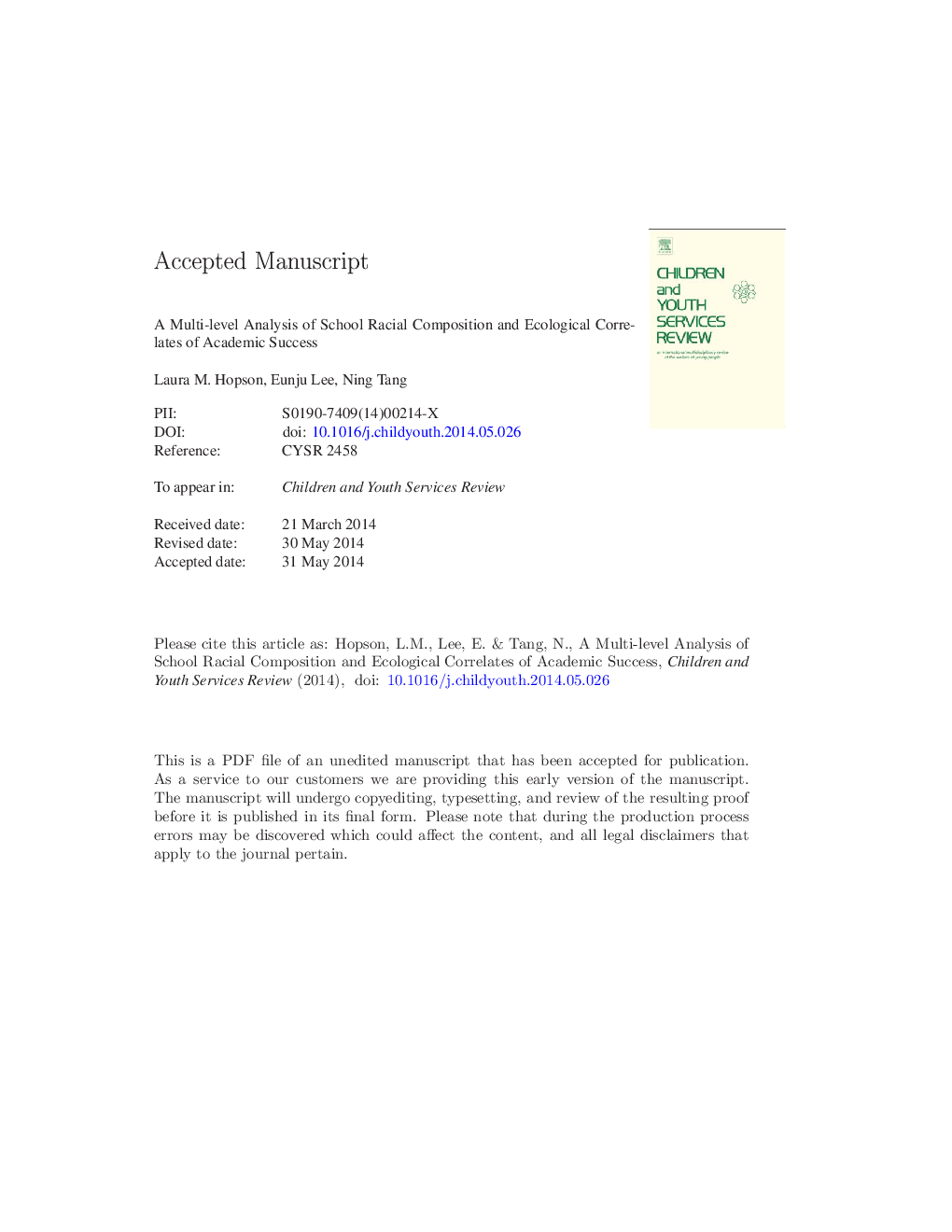| Article ID | Journal | Published Year | Pages | File Type |
|---|---|---|---|---|
| 6834227 | Children and Youth Services Review | 2014 | 39 Pages |
Abstract
Current policy and practice interventions have failed to address disparities in academic success by race/ethnicity or socio-economic status. In addition, as policy interventions to prevent racially segregated schools have stalled, progress toward reducing these achievement gaps has also slowed. This exploratory study employs multi-level modeling to examine how risk and protective factors in students' schools, homes, peer groups, and neighborhoods relate to behavior and academic performance. We examine whether these relationships depend on the racial composition of the school and, in particular, the concentration of African American students in schools. The findings indicate that protective school, home, peer group, and neighborhood environments characterized by social support and safety are associated with positive academic outcomes and behavior. Students attending more segregated schools in which the majority of students are African American report worse behavioral and academic outcomes than students in other schools, even when controlling for other important dimensions of the school environment, school climate, school safety, and poverty. In addition, school racial composition shapes how key protective factors relate to grades.
Related Topics
Health Sciences
Medicine and Dentistry
Perinatology, Pediatrics and Child Health
Authors
Laura M. Hopson, Eunju Lee, Ning Tang,
